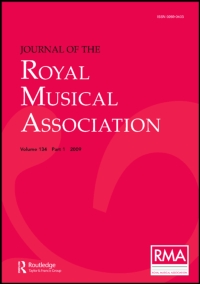No CrossRef data available.
Article contents
Extract
I think I may claim that in this paper, whatever its defects, is a sign of the times. I doubt if in, shall we say, 1914, anyone could have envisaged a paper on the aspect of Verdi which I am going to stress, being read to the Musical Association at all. With the exception of “Otello” and “Falstaff,” and perhaps “Aïda,” Verdi's operas were either entirely dead or regarded as purely popular entertainments, remarkable only for their good tunes. In the meantime, however, there has been a great change. Since the war, the revival of what may be called serious interest in Verdi and his operas has been very marked. The extent of this revival is not perhaps fully realised in England, which, together with France has not yet experienced it to any great degree. But it has been very noticeable in Italy, the United States, and above all, in Germany. Perhaps a few facts would be of interest to you. Take Italy. Those of you who are familiar with the Italian musical tradition will know that what may be called an archaeological interest in music is the last thing in the world that appeals to the average Italian. When, as was certainly the case, Verdi's operas began to be viewed as old fashioned by the younger generation, their eventual doom seemed sealed. Doubtless Verdi retained his hold on the purely popular theatre, but the middle and upper classes showed signs of deserting en masse to Wagner, who is indeed probably the most popular composer in Italy to-day among the educated classes. There are now, however, distinct signs of a swing in the other direction. Thanks in a great measure to the genius and care of Toscanini, the orchestral as well as the vocal effectiveness of works like “La Traviata” have been emphasised anew.
- Type
- Research Article
- Information
- Copyright
- Copyright © Royal Musical Association, 1929


